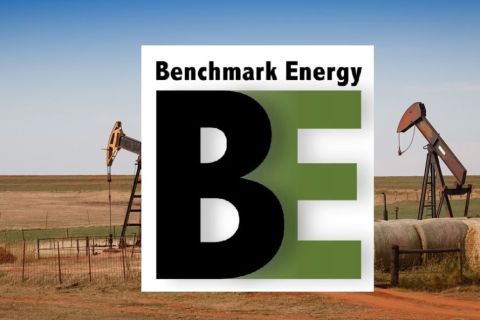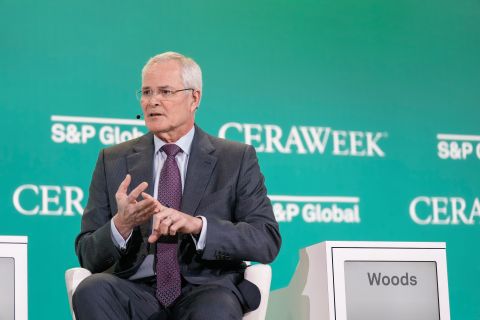Defining the best and worst of times for the energy business depends on where you stand. For exploration and production companies, sustained high commodity prices are a godsend. But that kind of cash flow precludes many of them from divesting producing properties, which in turn would fuel the borrowing needs of buyers. For energy bankers, this slower deal pace is frustrating. What's more, their clients are paying down existing debt. In response, a few of the biggest banks have consolidated. Others are fighting what one banker calls "portfolio attrition" by stepping up their marketing efforts and courting smaller deals than they have pursued in the past. Nevertheless, some new regional lenders are entering the energy space. They remain cautiously optimistic. One banker refers to an engineering report from 1981. "The maximum price cap then on escalated pricing was $75 per barrel. Now our escalated price for the past five years has been capped at $32.50 per barrel," says John E. Davis with Union Bank in Oklahoma City. For a long time, many banks have maintained a policy that they would give no more than 35% of the loan value to proved developed nonproducing and proved undeveloped reserves. But recently, banking has grown more competitive. Bankers report seeing more "Tranche B" or non-conforming deals in the marketplace where these "lesser" reserves are given more weight in the total loan package. Union Bank of California This Los Angeles-based bank, with $43 billion in assets, has nearly $2 billion in outstanding oil and gas loan commitments in the U.S. and Canada. Its Dallas office opened in 1984 and a Calgary office was added in 2002. Its staffing includes 10 relationship officers and four petroleum engineers. Some 75% of its oil and gas commitments are upstream, reserve-backed loans to independents. The bank requires a third-party audit of reserves annually. "As for loan size, we are all over the board," says Carl Stutzman, Dallas-based senior vice president and manager of the bank's petroleum group. "We agent several large relationships, including Chesapeake Energy where we are currently increasing their revolver to $500 million. But we'll do smaller deals for $5- or $10 million for management teams with a strategy we like." The bank's sweet spot is $25- to $40 million, but Union Bank of California will take a lead underwriting role in much larger syndications as well. "To the extent a client hedges, we'll give them credit and increase the amount they can borrow on a conforming basis," he adds. Through a subsidiary, the bank has the ability to do a mezzanine debt component with a higher advance ratio against nonproducing reserves. Next up? By third-quarter 2004, the bank hopes to add an in-house commodity hedging function to further assist clients. This will complement the existing menu of crossborder financing, senior debt, mezzanine debt, direct equity, and interest rate and currency hedging. Recently the bank closed a $135-million debt transaction for Mariner Energy Inc., as part of the Houston-based producer's refinancing and management buyout. Mariner had been owned by an affiliate of Enron Corp., but now is owned by management and two private equity funds. Union Bank of California co-underwrote the deal with BNP Paribas to include a conforming piece and a Tranche B piece as well. "We lead-arranged the debt financing and our private equity group invested equity in the deal," Stutzman says. The bank will grow with a client, as it has done for Houston-based Edge Petroleum. That relationship started with a small commitment but has since grown to $40 million. Stutzman notes that many of the bank's clients hope to sell producing properties now, so it is seeing less demand from them for acquisition-related loans than historically. Union Bank NA This past July, Union Bank NA started its energy lending program in Oklahoma City. Although it is relatively new to the energy scene, vice president Davis is not. With NationsBank in the early 1990s, he also worked for small banks in Abilene, Texas, in the past. He closed the bank's first energy deal last fall, a traditional reserve-backed loan for a private Oklahoma independent for an undisclosed amount. The loan was used to fund a small acquisition. The client had properties already but the line of credit enabled it to buy more. The bank's preferred size range is $500,000 to about $10 million, with the sweet spot from $3- to $5 million. "We do have the ability to go above $10 million, to grow with you if you are bumping up against that limit," Davis says. "We'd rather use that capacity and grow with you." Union Bank is looking for business beyond Oklahoma and can make production loans anywhere in the lower 48 states. Despite being ready, willing and able to deal, Davis (like other bankers) notes that the deal flow is relatively slow these days. He cites two reasons: slower acquisition and divestment activity that typically fuels borrowing needs, and the persistent gap between buyer and seller on commodity prices. "I think it's because sellers are not comfortable selling now-they like getting those big run checks. Oil is at $35 to $36 a barrel on Nymex but the price deck is at $25.75-that's a big gap," he says. "But quite a few banks are interested in energy deals now. The competition in central Oklahoma and in Oklahoma City is very healthy." Most banks will advance 50% of the value of proved reserves, but Union is willing to go further, up to 65% in some cases. "We risk-adjust the reserves, so a low-risk project may get a higher advance rate. We use PV-10 generally, whereas some banks have gone to using PV-9 values," he says. In its evaluation, the bank will give some value to proved shut-in, behind-pipe and proved undeveloped reserves, but only if the borrower already has enough liquidity to turn them into producing reserves. It relies most on proved producing reserves. "We'll make a good deal work, but we won't make a marginal deal work," Davis says. "For example, we won't take a deal based on proved nonproducing reserves if they require a frac. We don't want to rely on whether the frac is done and if it successful." He will look at development-drilling deals as well as acquisition-related transactions. Key Corp. Key Corp., a Cleveland-based financial institution with $85 billion in assets, has long made the middle-market industrial Midwest its focus for banking services. Key has had an active investment-banking practice focusing on the E&P, midstream and utility sectors since it acquired McDonald Investments in 1998. The latter has since been renamed KeyBanc Capital Markets. Key has been providing loans to the midstream and utility sectors for some time. Midstream clients include master limited partnerships (MLPs) Teppco Partners, Enterprise Product Partners and Kaneb Pipeline Partners. Key's energy group was a co-manager on the $233-million initial public offering of Denver's Whiting Petroleum last November. Additionally, it advised United States Exploration Co. in its sale to DGL Acquisition Corp., effectively taking United States Exploration private, in January 2004. DGL was formed by Greenhill Capital Partners and Limerock Energy Partners. Next, Key plans to add oil and gas lending to the current offerings of MLP and utility lending and investment banking. "We are just now moving into the upstream for E&P lending," says Brian Akins, senior vice president, energy group. "Usually banks move from lending to investment banking, but we're doing just the opposite, moving from investment banking in energy to lending." By this summer Key expects to have hired additional personnel to assist in the upstream lending effort. At the moment there are no plans to open a Texas office, although that may happen eventually. Key's sweet spot for loan commitments in energy will be $25- to $40 million, Akins says. Richard Webber heads the overall energy-banking effort from Cleveland and Akins heads the midstream and oil and gas banking segment from the bank's Indianapolis office. PRICE DECKS ohn Davis, Union Bank NA We don't use the Nymex strip prices. Since we are a smaller bank without access to economists per se, we use the OGJE/Madison Energy Advisors quarterly pricing poll, which includes the price deck of four Houston banks. We change our price deck every quarter but don't change a company's borrowing base but once or maybe twice a year. If they are in an exploration mode with the likelihood of expanding production, we'll accommodate them with a six-month review. Carl Stutzman, Union Bank of California We tend to be in the middle of the pack. Right now we are using $23 for oil and $3.75 for gas, but we are looking at an upward revision in response to the continued strength in commodity prices. We've never had the most aggressive price deck and yet we're never the first to drop our prices either. We change the price deck less frequently than some of our competitors might, but we do look at it at least every six months.
Recommended Reading
Mighty Midland Still Beckons Dealmakers
2024-04-05 - The Midland Basin is the center of U.S. oil drilling activity. But only those with the biggest balance sheets can afford to buy in the basin's core, following a historic consolidation trend.
Uinta Basin's XCL Seeks FTC OK to Buy Altamont Energy
2024-03-07 - XCL Resources is seeking approval from the Federal Trade Commission to acquire fellow Utah producer Altamont Energy LLC.
EIA: Permian, Bakken Associated Gas Growth Pressures NatGas Producers
2024-04-18 - Near-record associated gas volumes from U.S. oil basins continue to put pressure on dry gas producers, which are curtailing output and cutting rigs.
Benchmark Closes Anadarko Deal, Hunts for More M&A
2024-04-17 - Benchmark Energy II closed a $145 million acquisition of western Anadarko Basin assets—and the company is hunting for more low-decline, mature assets to acquire.
CEO Darren Woods: What’s Driving Permian M&A for Exxon, Other E&Ps
2024-03-18 - Since acquiring XTO for $36 billion in 2010, Exxon Mobil has gotten better at drilling unconventional shale plays. But it needed Pioneer’s high-quality acreage to keep running in the Permian Basin, CEO Darren Woods said at CERAWeek by S&P Global.





